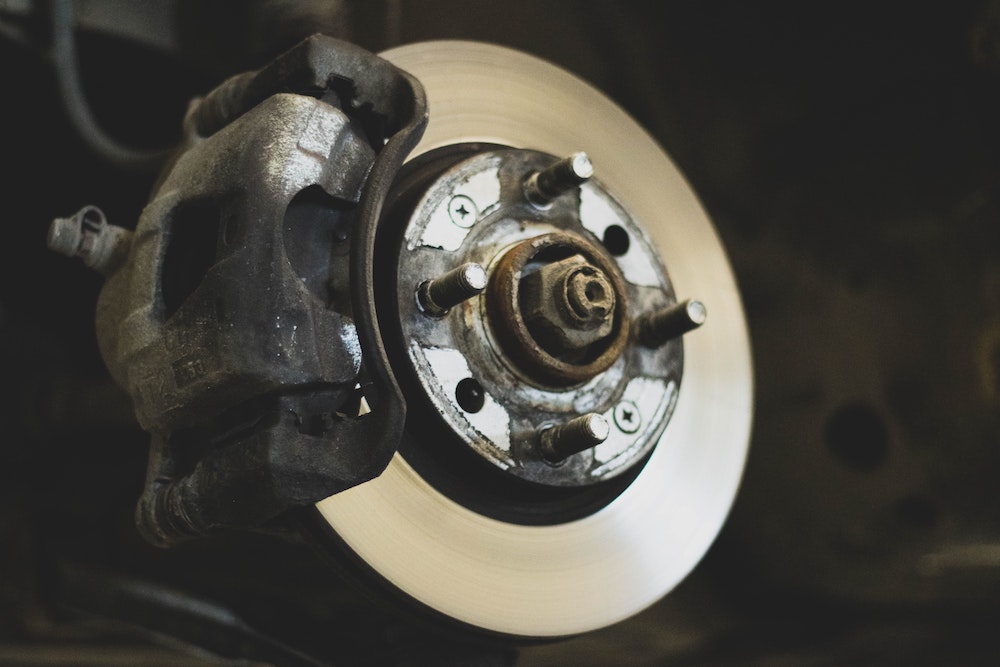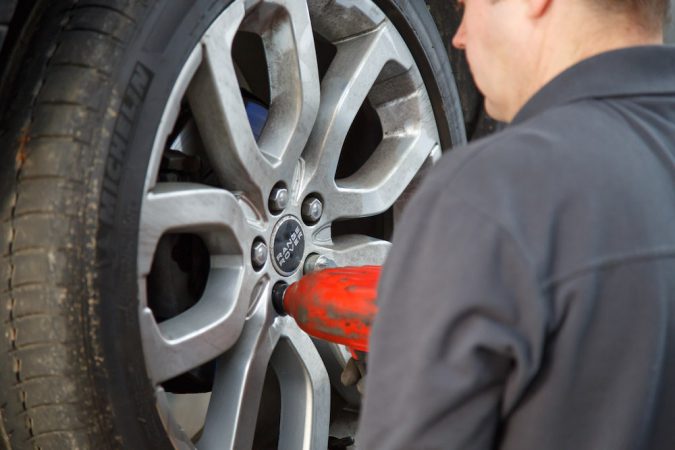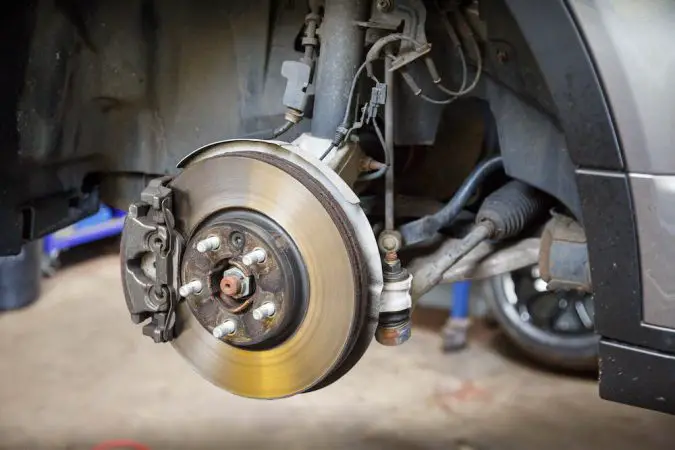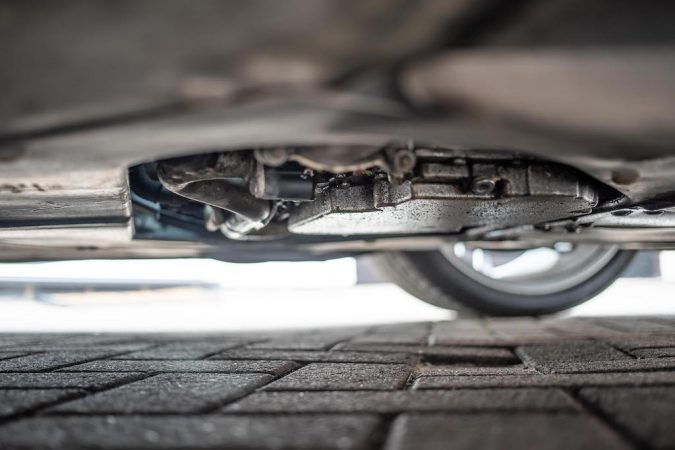So, have you been driving with the same brake fluid for a very long time? Are you looking to flush the fluid from your brakes, and also want to know how the brake fluid flush process works? You came to the right place. We are going to cover everything you need to know when it comes to brakes and brake flush.
Changing your brake fluid regularly is the way to go if you want to be safer on the road. Over time, the working characteristics of this fluid are lost and your brakes just don’t feel right anymore.
Sometimes, you know that you need to perform a brake job on your car, but you are delaying it. There could be one of many reasons. However, when it comes to the brakes, you should not delay things and regularly maintain them on time for you to drive safely.
Remember that you don’t travel alone and you have occupants. Also, think about the other road users. Braking distance matters a lot in some situations. Sometimes, only 1-foot is the key to avoiding an accident. So, make sure that your brakes are in proper working order.
In this article, we are going to cover precisely that. We are going to learn how the brakes work and what type of fluid do they use. Then, we are going to cover the brake fluid flush procedure and also how you can perform this job at home. It is a relatively easy job that anyone can do. Then we are going to cover the brake fluid flush cost. So, let’s dive into the article.
What Is A Brake Flush?
A brake flush is a special procedure that is performed on your vehicle. This procedure involves replacing your old brake fluid with a new batch. This is necessary to be performed on vehicles that haven’t been serviced for a very long time.
This fluid can’t easily tolerate an overdue replacement. Eventually, it will start to change color and turn black. Inside of the fluid, there is a lot of debris that has been collected, and this prevents the fluid to work properly and stops your vehicle on time.
This procedure has to be performed professionally to deliver the required result. If it’s not done right. It’s going to cause you many headaches in the long run. That’s especially if your brakes start to leak fluid, and your car doesn’t stop. This may also involve you in an accident.
Brakes should always be in perfect working order. So, when you are planning to do a brake flush, it is worth considering visiting the best place, no matter the cost. This problem has to be tackled professionally and done correctly.
You can also do it at home. And how you can do it is something we are going to explain later in this article. First, we are going to cover how this system works and what type of brake fluid is used for you to have a better understanding of what you are getting yourself into.
Doing DIY stuff sounds fun, but it can also be dangerous. That’s why some good research will help you out immensely. You need to learn all the ins and outs to perform this work immaculately.
How Does The Braking System Work?
The brake system works pretty straightforward. It is composed out of a few components. Namely, the master cylinder is the brain of this system, and on the top of the master cylinder is the brake fluid canister. Then there are the brake lines that go from the master cylinder to each wheel.
Then the brake lines are connected to the calipers. Based on the driver’s input, they activate the pistons of the caliper.
Everything starts with your input on the gas pedal. When you press the brake, you are creating a vacuum in the master cylinder. This vacuum is needed for the fluid to return to its primary position, and the car can stop braking.
If there isn’t a vacuum, the brakes will continue to be activated and the car will not be able to be moved at all. That’s why this vacuum returns the pedal when you lift your foot from it.
The brake fluid travels forward and back in the brake lines. When it moves forward, your brakes are activated and the pistons are released. When the fluid goes backward it returns to the master cylinder. Pretty simple, and that’s how the system works.
Then, there are the calipers. The calipers are basically creating pressure on the brake disc when you apply the brakes and make the car stop. It is good to know that there are disc brakes and drum brakes.
In the past, all the vehicles had drum brakes. But as the technology has advanced, there was a shift towards disc brakes. Disc brakes work better in every way. Although, drums can be still found as rear-axle brakes on some vehicles. This is because rear brakes are not very demanding and drum brakes can handle this stress.
What Type Of Fluid Does The Brake System Use?
The fluid that cars use to stop is called brake fluid or by its name DOT. DOT refers to the Department of Transportation. Most of the fluid types out there are glycol-based but there is also one silicone-based fluid. Namely, DOT 5, which is recognizable for its purple color.
The glycol-based brake fluids are DOT 3, DOT 4, and DOT 5.1. The old cars usually use DOT 3, but as the years progressed, they have started using DOT 4 and DOT 5.1.
https://www.youtube.com/watch?v=e7kFWYdXNA0
Cars that use glycol-based fluids cannot use DOT 5. These fluids cannot be mixed. If they are mixed, the fluid is not going to perform well and you may end up with malfunctioned brakes. So, the best thing to do is to pay attention and get the right fluid for your vehicle.
The price for this fluid is extremely cheap and can be found for less than $20 at every auto parts store around the country. That’s why the cost of a brake fluid flush is not that expensive. We’re going to cover costs later in this article.
Why Do You Have To Flush The Fluid?
The fluid has to be flushed every 50,000 miles, at the most. However, and depending on your vehicle, it may need a flush with an interval as brief as 20,000 miles. This is the case because every fluid, over time, is losing its capability to work.
This impacts the performance of the brake fluid in your vehicle. This means that your braking distance will be questionable. That’s why doing the regular service on your car is a good idea. A brake fluid flush helps you in two ways and those are.
Keeping The Quality Of The Fluid In Check
After some time and with heavy use, the brake fluid gets contaminated with material from other parts of the brake system. And these include different kinds of debris, metal particles, and rubber.
These particles will limit the circulation and flow of your fluid around the brakes. This means that your brakes are not going to stop as they used to. This will result in less stopping power. If you have less stopping power, it means that you will have to press on the brakes sooner and harder than you would ordinarily do.
Also, this affects your braking quality. A car that has old brake fluid is not going to stop like a car with new brake fluid. Many people who ignore these brake fluid changes would find their car taking more time and distance to slow down. This is the result of poor maintenance and the inability of the vehicle to achieve optimal braking performance.
Prevent Moisture Buildup Inside Of The Brake Lines
Also, over time, the brake fluid will start to absorb moisture. These fluids work in a way that they can absorb the water particles inside the brake lines, as they carry the moisture in their circulation.
This fluid then damages the components of the braking system like the brake lines, master cylinder, and piston calipers. That’s especially so if this water causes rust buildup on the piston calipers. This can result in them being stuck close and prevent them from clamping the brake pads.
A rusted brake caliper piston can ruin your braking distance. As well it seizing your caliper and preventing your vehicle from moving. The rust will eat away at the pistons and will cause them to seize, and these pistons will not work. At this stage, you will have to either rebuild the caliper and replace the pistons.
Or, you can get a brand new caliper. The cost for repairing this problem is somewhere between $300 to $500. And sometimes, the price is even higher if you have to replace the brake rotor as well. That’s why a brake fluid flush should be considered, and the flush performed in time to prevent expensive issues like this to happen.
Symptoms That Are An Indication That You Need A Brake Fluid Flush
Like with every other component in your car, the brakes will start to develop symptoms to tell you that a brake fluid flush is urgent. It will also remind you in a way that you have to service them to extend their lifespan. So, what are the symptoms?
Soft Brake Pedal
A soft brake pedal is a clear sign of too much moisture in your brake fluid. When the brake fluid is contaminated with water, it’s going to prevent the brakes from doing their job properly.
There are pockets of water vapor inside of the fluid. These pockets are created when the fluid is exposed to high temperatures. These pockets are going to affect your braking distance and will also cause your brake pedal to have a soft and spongy feeling.
This is no good and if the brakes are not reacting as they should when you apply them, it can cause a safety hazard and possibly result in accidents. That’s why when you have a soft brake pedal, you have to act quickly and learn more about a brake fluid flush. Thus, you can make sure that you solve this problem as soon as possible.
Contaminated Brake Fluid
Brake fluid over time gets contaminated with particles. These particles include metal, rubber, and rust. All these particles are going to affect your braking distance if there are too many of them in your fluid.
To see the condition of the fluid, you have to inspect it and see the condition. If the fluid is dark and dirty, it means that there are too many particles and contaminants inside of it.
In this case, the best thing you can do is to replace the fluid. Make an appointment with your mechanic for a brake fluid flush. Or, if you are a DIY enthusiast that wants to work on his car, you can check our DIY tutorial later in this article. There, we are going to thoroughly explain the steps involved in flushing the brake fluids in your car.
Brake Fluid Leaks
Brake fluid leaks are also one of the symptoms of a failing brake system. If you have a brake fluid leak, it means that you have to address this problem as soon as possible to avoid getting yourself in danger and possibly get involved in an accident.
When you are losing brake fluid it is necessary to observe the amount of fluid left in the brake fluid reservoir that is located on top of your master cylinder.
By doing this, you can be sure that you will have enough fluid. But you should never drive like this. You have to solve this problem as soon as possible and make sure that your brake system is working properly.
This will require changing your brake lines and flushing the fluid. After this, you can be certain that you’re driving a vehicle in good working order.
ABS Light On
ABS light can also turn on when you have bad brake fluids in your car. The ABS light usually turns on and off when the ABS engages. But if it stays on, it means that something is wrong with your braking system and one of the possibilities is that your brake fluid isn’t working very well.
If your ABS engages all the time, it means that there is something wrong. Some of the possibilities when you have an ABS light can be a malfunctioning ABS module, bad wheel bearings, or broken speed sensors. All these things, along with the bad brake fluid, can accelerate these issues and cause the ABS light to appear more often.
To solve an ABS light, you will have to do a brake flush, as well as diagnosing your car. This will help to diagnose if there is a problem with the sensors or if the ABS module is broken.
How Do You Know That You Need A Brake Flush?
If you don’t get any of the symptoms listed, the simplest solution to see if you need a brake flush is to check the brake fluid canister.
Before you open the canister make sure that you wipe off all the dirt that is on top of it. You don’t want to contaminate the fluid that is inside.
After you cleaned the canister, now it’s time to see the condition of the fluid. Inspect the fluid for impurities. If the canister at the bottom is black. and the fluid is contaminated with particles, which means that you need to perform a brake fluid flush.
After that, you may want to research more about the cost to perform a brake fluid flush and you will also learn how to perform this flush. We are also going to show you later on how you can flush your brake fluid at home using a simple method.
If the fluid inside of the canister is clean, it means that you don’t have to perform a brake fluid flush. Or, if it’s old, then it is a good idea to flush it. Because remember, brake fluid traps water particles. And if these particles are in your brake fluid, they will start to eat your brake lines and cause rust to your pistons over time. That’s why replacing the brake fluid once a year is a good idea.
You will benefit from this maintenance in the long run and your braking system is going to be in top working order.
How To Flush Your Brakes DIY?
If you are a DIY guy, you probably don’t want someone else messing up your vehicle and want to do this on your car. If that’s the case, this chapter is going to be just for you. We are going to learn how to flush brakes in a DIY fashion. Plus, we are going to study how to perform this job easily and effectively.
Just to note, that you are going to need another person for this kind of work. This is the case because someone has to pump the fluid, while you’re flushing it.
For this work, you are going to need new brake fluid and a simple wrench to access the brake line bolt that is located on the back of the caliper. So, let’s start with the tutorial.
Step 1
The first step involves cleaning the brake fluid reservoir and make sure that there is not a possibility of dirt or debris getting inside of the master cylinder.
Step 2
After you cleaned off the canister now it’s time to get a big syringe and suck out all the fluid that is in the canister. Then, fill up the canister with new brake fluid before you go to the next step.
Step 3
Now it’s time to access the bolt at the back of the calipers and unbolt it. After you unbolt the bolt, it’s time to pump up the pressure with the brake pedal. This pressure will push the old fluid out of the system.
And now comes the important part, as the fluid flows out of the system you need to continue topping off the fluid inside of the canister. This will make sure that there is no air in the brake system and everything works properly.
Step 4
After you are done with one wheel and you see that the brake fluid that comes out is clean then it’s time to move on to the other wheels. Repeat the process along with all four wheels and you are good to go.
Brake Fluid Flush Cost
The cost of a brake fluid flush is not very expensive. If you are doing the flush at home following this simple process that we discussed, you are going to pay only $20 for the brake fluid. This brake fluid can be found in every auto parts store with no problem.
Or, if you want to go to a mechanic, you are probably going to pay more. A brake job at a shop is going to set you back around $150. This is also a good option since you are replacing your brake fluid only every once in a while. So, it won’t hurt your wallet too much.
Brake Fluid Flush Facts:
- Brake maintenance is often neglected by drivers until there is a failure, but regular maintenance is crucial for safety.
- Brake fluid plays an integral role in your car’s overall brake system by pushing against the brake pads or shoes to stop the wheels.
- Small pieces of debris can flake off from the brake system’s components over time and contaminate the brake fluid.
- Dirty brake fluid becomes less effective and can impact the overall effectiveness of your braking power.
- Brake fluid absorbs water each year, making a brake fluid flush essential every 30,000 miles or every two years.
- A brake fluid flush involves removing all old, dirty brake fluid and replacing it with fresh, clean fluid using a brake-flushing machine.
- Brake fluid can be changed at home, but it’s important to use high-quality fluid and prevent air contamination.
- During a brake fluid flush, tubing is connected to the brake valve to empty the old fluid into a container while new fluid is pumped through until it’s clean.
- A brake fluid flush costs around $100, with most of that cost going toward labor.
- Regularly changing out your brake fluid can make your car safer, extend the life of your brake components, and save you money down the road.
Brake Fluid Flush – Conclusion
In this article, we have covered a lot when it comes to brake fluid flush, as well as the cost for a full brake fluid flush. We have discussed how the brake system works and what type of brake fluid it uses.
Then, we have covered all the symptoms connected to bad brake fluid and how you can know if your fluid needs changing. Then, we created a small tutorial for you to have a better picture of how this flush job can be done at home.
And lastly, we covered the brake fluid flush cost. There, we studied how much a brake fluid flush is going to set you back. And in my opinion, it’s not expensive. It’s worth doing it.




